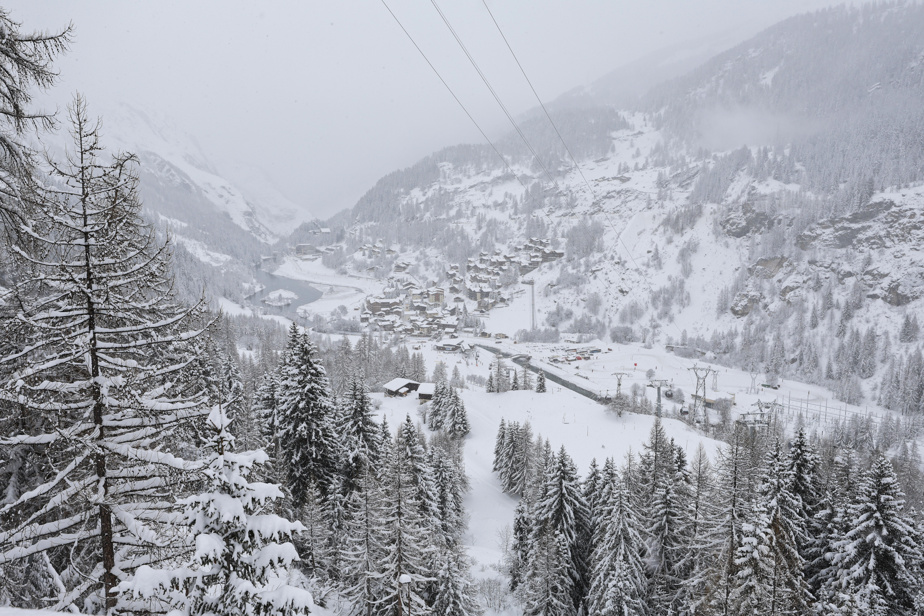(Chamonix) “Russian roulette” or “incredible opportunity”: the announced candidacy of the French Alps for the 2030 Winter Olympics, jointly supported by the Auvergne-Rhône-Alpes (Aura) and Provence-Alpes-Côte-d’ regions Azure (Paca) divides.
Laurent Wauquiez and Renaud Muselier, the presidents of the two regions promise: these will be “sober games” and above all an “incredible opportunity” for the territories concerned.
Their application must be submitted on November 7 before a grand oral hearing before the International Olympic Committee (IOC) on November 21. The decision is expected in 2024, Sweden and Switzerland are also candidates.
“It’s still a bit like Russian roulette” for the snow, dares, doubtfully, Catherine Dufour, a resident of Chamonix born in a family closely linked to the Winter Olympics since her grandfather, her brother and her cousin there took turns participating.
“We had the snowiest village in France at the bottom of the Chamonix valley. But today, the snow cover is poor, one day it will stop,” says this 61-year-old retiree, worried about the possible “financial waste” and “concreting” linked to the construction of infrastructure.
“Reuse the existing”
The mayor of Chamonix, Éric Fournier, is categorical: “If we stay on the old-fashioned model, there is definitely no room.” But the Games are possible if “we work with existing sites, which will have a real future and an economy of resources”.
Laurent Wauquiez rightly promised to “rely on existing infrastructure” for “first sustainable Olympics”.

PHOTO JEFF PACHOUD, AGENCE FRANCE-PRESSE
Laurent Wauquiez
Because the region has a rich Olympic history: the very first Winter Games were hosted by Chamonix, almost 100 years ago, then by Grenoble in 1968 and Albertville in 1992.
La Plagne, a resort perched at an altitude of 1,400 m, hopes to reuse its bobsleigh track, the most expensive equipment at the Albertville Olympics. “This is the example to follow,” explains Mayor Jean-Luc Boch, very enthusiastic about the Alps’ candidacy.
“France has chosen tourism,” he explains. “If we stop all economic activity, will that change global warming? “.
A vision shared by Benjamin Sauze, company manager from Lyon on vacation in Chamonix: “Obviously, it consumes energy, but we still have to continue to organize sporting events in the region.”
The issue is crucial in the Alps, in the midst of questions about the future of their economic model. According to Domaines Skiables de France, 120,000 jobs depend on winter sports, a first summit “for a sustainable mountain” was organized this week in Chamonix to think about adaptation to climate change.
“Tip of the iceberg”
Renaud Muselier, president of the Paca region, is confident: “according to studies we will have snow until at least 2050,” he told the press this week.
“Snow will be less and less available”, corrects Thierry Lebel, hydroclimatologist.
Last December, the Grand-Bornand station (Haute-Savoie), at an altitude of 1,300 meters, had to transport 12,000 m2 of snow storage by trucks to accommodate a stage of the Biathlon World Cup.
Without the use of artificial snow, 53% of European resorts would face a “very high” risk of lack of snow if the rise in global temperatures was 2°C, according to a study published in August in the journal Nature Climate Change.
However, artificial snow is a “maladaptation” for Thierry Lebel, because “to deal with the consequences of climate change, we emit an even additional quantity of greenhouse gases”.
The 2030 Olympics project, “is the tip of the iceberg in relation to all the problems we are currently encountering” linked to “all tourism” and “all alpine skiing”, believes Vincent Neirinck, from the “Mountain Wilderness” association. And “it contributes to a headlong rush which is not acceptable. »
“Whatever we are promised at each edition, the Olympic Games have never proven their safety,” underlines the activist, pointing to the all-artificial snow of the Beijing Games which, according to him, contributed “to trivializing the snow serpent in the middle of the desert.
